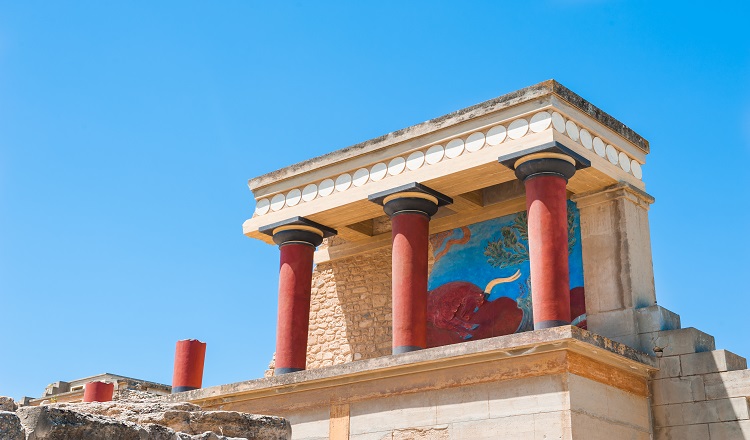
Knosos
Knossos, the most important center of Minoan civilization, is located on the hill of Kephala, surrounded by olive groves, vineyards, and cypress trees. It is situated approximately 5 kilometers southeast of Heraklion. The river Kairatos (also known as Katsambas) flows beside it. According to legend, Knossos was the seat of King Minos and the capital of the Minoan state.
History of Knossos
The magnificent monument of the Minoan palace is the main tourist destination in Knossos, an important ancient city that had continuous habitation from the Neolithic period until the 5th century BCE. This archaeological site is located on the hill of Kephala. According to mythical tradition, it was the seat of the wise King Minos. The myths of the Labyrinth with the Minotaur and Daedalus with Icarus are closely associated with the palace of Knossos.
The first excavations in the area began in 1878 by the Heraklion local, Minos Kalokairinos. Later, the Englishman Sir Arthur Evans conducted excavations from 1900 to 1913 and from 1922 to 1930, revealing the entire palace.
The earliest traces of settlement in the palace area date back to the Neolithic period (7000-3000 BCE). The habitation continued in the pre-palatial period (3000-1900 BCE), and at the end of this period, the site was leveled for the construction of a large palace. The first palace was destroyed, possibly by an earthquake, around 1700 BCE. A second, even more impressive palace, was built on the ruins of the previous one. After a partial destruction around 1450 BCE, the Mycenaeans settled in Knossos. The palace was finally destroyed around 1350 BCE by a major fire. This site was inhabited again from the Late Mycenaean period until the Roman era.
How to travel to/from Knossos?
There are ferry routes from Piraeus to Heraklion all year round. The duration of the ferry trip from Athens to Heraklion is 8.5 to 9.5 hours, with prices starting from €36 for a regular seat.
Below are some road connections to Knossos:
- Road route from Heraklion to Knossos: distance 6 km (15 minutes)
- Road route from Chania to Heraklion: distance 128 km (1 hour & 50 minutes)
- Road route from Rethymno to Heraklion: distance 82 km (1 hour)
